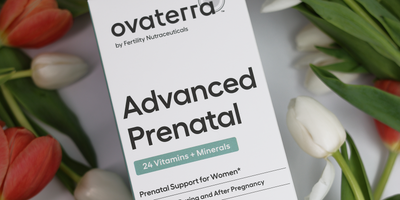November is the Prematurity Awareness Month. More than 1 in 10 babies are born early in the United States. That’s important, partly because prematurity can have serious health consequences for the baby, but also because it reflects the suboptimal state of the US healthcare at large, and prenatal care in particular.
What’s the current state of premature births in the US? Who is at risk? And what can we do – as individuals and as a society – do to reduce preterm births? Let’s dive in.
What is prematurity?
Prematurity, or preterm birth, is when a baby is born before 37 weeks of gestation is complete. A healthy pregnancy is about 40 weeks long, so a preterm baby misses out on 2 or more weeks of growth and development toward the end of the pregnancy.
How common is premature births?
Prematurity is unfortunately very common in the United States, where 10.5% of babies are delivered before 37 weeks. That’s over 380,000 babies born in 2021 alone.
The US has one of the highest preterm birth rates among the industrialized nations. In comparison, prematurity rates in Canada and the UK are around 8%; in nordic countries and Japan, they are below 6%. According to the WHO, Malawi, the country with the highest prematurity rate in the world, has it at 18%.
What are the health risks of premature births?
Babies keep growing and developing into the last few months and weeks of the pregnancy, so being born too early means the baby misses out on that development, which can affect not just the baby’s health soon after birth, but also well into adulthood. Importantly, the baby’s brain is one of the last major organs to develop in pregnancy, doubling in size in the last few weeks of the pregnancy.
Premature babies can be affected by a range of health challenges, and prematurity accounts for 16% of the US infant deaths. Common health problems among preterm babies include:
- Problem with basic functions, like breathing, feeding and regulating body temperature
- Longer stays in the hospital or in the NICU
- Newborn jaundice
- Problems with vision (retinopathy of prematurity) and hearing
- Cognitive and developmental problems, including ADHD
- Chronic health conditions in adulthood, including diabetes, hypertension and cardiovascular problems
Although medical advancement in neonatal care has greatly improved the outcomes of even very preterm babies, in general, the closer to term a baby is born, the better the outcome, both short and long term.
What are the premature birth risk factors?
There are several well-known risk factors to premature births. Some are related to the pregnancy itself, while others have more to do with your medical history. Here are a few major risk factors:
- History of previous premature births.
- Short time between pregnancies, particularly under 18 months.
- Twins and higher-order multiple gestation.
- Underlying health conditions, like diabetes and high blood pressure.
- Lifestyle factors, like smoking, alcohol and recreational drug use.
- Pregnancy complications, particularly those that affect the placenta.
- Maternal age under 18 or over 35, which raises the likelihood of having some of the risk factors above.
It’s important to note, though, that premature births can happen to women without any of these risk factors. So, keep an eye out for warning signs of premature labor like contractions, changes in vaginal discharge and lower backache – and please don’t blame yourself if this ends up happening to you.
Premature births aren’t just an individual health issue
With all that said, prematurity is as much a public health issue as it is an individual health challenge. Its public health aspect is perhaps the most obvious in how premature births are driven by healthcare disparities along the geographical, racial and socioeconomic lines.
African American moms are 50% more likely than moms of other races to have premature babies. Teen moms, moms with low income and those who live in the maternity care deserts are more likely to experience preterm labor, too.
According to the March of Dimes report released in mid-October, up to 6.9 million women and nearly 500,000 births are affected by low or no access to maternity care. Alarmingly, “maternity care deserts” – defined as counties with no maternity care available, mostly in rural areas – have actually increased from 2021 by 2%, now covering 1,119 counties and nearly 16,000 women.
What can you do to reduce the risk of prematurity for you, and more broadly?
For individual moms-to-be, several key actions can reduce the risk of delivering the baby too early:
- The three vices: Stop smoking, alcohol and drugs (except those prescribed by your doctor, of course).
- Plan: Be strategic about your pregnancies and space them at least 18-24 months apart.
- Preconception health & existing conditions: Head into the pregnancy as healthy as you can be, and work with your doctor to manage any existing health conditions. Pregnancy can affect your existing conditions, and that can, in turn, impact your pregnancy.
- Regular prenatal care: Get prenatal care as soon as you know you are pregnant, and stick with your appointments. This will ensure that your doctor can pick up on any signs of complications and address them proactively.
- Stay on your prenatal vitamins: Studies have suggested that vitamins and minerals typically included in prenatal vitamins, including Vitamin B12, Vitamin D, calcium and zinc, may play supporting roles in the maintenance of a healthy, term pregnancy. So, it's a good idea to stay on your prenatal vitamins throughout pregnancy to make sure that your nutritional bases are covered.
- Stress management: Find healthy ways to relieve stress. Easier said than done, but try a variety of coping methods, and find ones that work for you.
At a broader scale, the US needs more equitable access to prenatal care, and healthcare in general, across geographies, socioeconomic strata and races/ethnicities. That means hospitals and birth centers, as well as healthcare professionals who take care of pregnant women, including OBGYNs and midwives, need to be within easy reach everywhere; and affordable health insurance needs to be available to everyone.
Advocating for expanded, more equitable access to prenatal care, volunteering for or donating to organizations that work in this area, and voting for candidates who push healthcare access forward can all help in reducing prematurity – and making the US a safer place to have babies for everyone.












